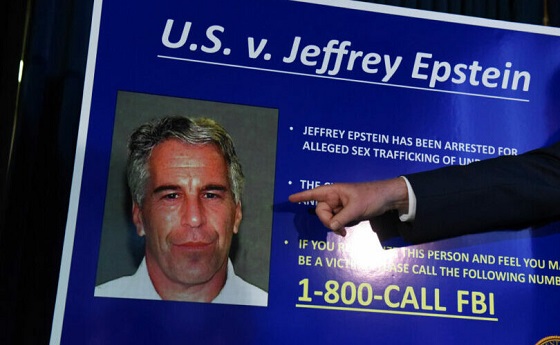Economy
Refuting the ancient myth of overpopulation

From LifeSiteNews
By Aidan Grogan
Recent findings decimate the Malthusian outlook and render advocacy of population control not only ill-informed and inexcusable, but frankly anti-human.
(American Institute for Economic Research) — Prince Philip once said, “In the event that I am reincarnated, I would like to return as a deadly virus, to contribute something to solving overpopulation.” The late Duke of Edinburgh passed away in 2021, but the hysterical sentiment he expressed about overpopulation lives on.
A YouGov poll found that overpopulation concerns are widespread among adults across the planet, with nearly half of sampled Americans believing that the world’s population is too high. This view is shared by 76 percent of Hungarians and 69 percent of Indians, according to the poll.
Overpopulation and ecological disasters have been the themes of numerous blockbuster movies, including ZPD (1972), Soylent Green (1973), Idiocracy (2006), and Elysium (2013). Mainstream news outlets have repeatedly promoted the apocalyptic idea to the public, with headlines such as “Science proves kids are bad for Earth. Morality suggests we stop having them” (NBC News). The progressive magazine Fast Company released a video titled “Why having kids is the worst thing you can do for the planet.”
The theory of overpopulation, and the collectivist idea that human reproduction must be limited, even by force, is nothing new. It first appeared in the ancient Mesopotamian Atrahasis epic, where the gods control the human population by infertility, infanticide, and appointing a priest class to limit childbirth.
Plato and Aristotle both endorsed a form of proto-eugenics and population control. In The Republic, Socrates and Glaucon conclude that an owner controlling the breeding of his dogs and birds to prevent their degeneration should also apply to the human species. The guardians would be tasked with deciding who is allowed to reproduce and who should be prohibited from having offspring. In the Politics, Aristotle advocated for state-mandated abortions of children with deformities or in cases where couples are having too many children and contributing to overpopulation.
The decline of Greek civilization in the second century BCE was not a consequence of an excess number of births, but precisely the opposite. Polybius attributed the downfall of Greece in his time to a decay of population which emptied out the cities and resulted in a failure of productiveness. It was not warfare and pestilence which reduced the birth rate, but decadence. The idle men of Greece, according to Polybius, were more interested in money and pleasure than marriage and child-rearing.
Two millennia later, English economist Thomas Malthus resurrected the old Mesopotamian myth with his 1798 An Essay on the Principle of Population. Malthus claimed that population growth increases geometrically while food production increases only arithmetically, which he believed would lead to widespread famine if the rapid propagation of humanity were not obstructed.
He identified two checks, one natural and one human-induced, which could keep population growth limited: preventive checks, such as delayed marriage or sexual abstinence, that stabilize the birth rate and evade the natural calamities of positive checks – famines, pestilences, earthquakes, floods, etc. – which represent nature’s striking back against the pressures of unhindered population growth.
Malthus preferred the former, but if unsuccessful, supported appalling and brutal depopulation measures. He suggested policies to “make the streets narrower, crowd more people into the houses, and court the return of the plague.” He also recommended banning “specific remedies for ravaging diseases.”
In 1859, Charles Darwin’s On the Origin of Species argued that species evolved gradually from a common ancestor. His follow-up The Descent of Man posited that humans descended from their ape-like past through a process of sexual selection that favored the stronger, more intelligent genes. Darwin said that his evolutionary theory “is the doctrine of Malthus applied with manifold force to the whole animal and vegetable kingdoms.”
READ: U.S. birth rate hit record low last year, signaling surge in childlessness
Darwin’s cousin, Francis Galton, used Darwin’s theory of evolution to develop eugenics – a pseudo-scientific theory that the human race could be improved through controlled breeding.
Subsidized by some of the largest philanthropic organizations in the United States, including the Rockefeller Foundation and the Carnegie Institution, eugenics was embraced by many leaders of the American progressive movement, who favored involuntary sterilization and immigration restriction.
Margaret Sanger, the founder of the American Birth Control League – later to be renamed Planned Parenthood – denigrated charity and referred to the poor as “human waste.” She and her companions considered several names for their movement, such as “neo-Malthusianism,” “population control,” and “race control,” before finally settling on “birth control.”
The eugenicists’ fervent collectivism and disregard for America’s founding principles affirming the inherent dignity and rights of every individual were best expressed through Madison Grant’s The Passing of the Great Race, in which he wrote:
Mistaken regard for what are believed to be divine laws and a sentimental belief in the sanctity of human life tend to prevent both the elimination of defective infants and the sterilization of such adults as are themselves of no value to the community. The laws of nature require the obliteration of the unfit and human life is valuable only when it is of use to the community or race.
Eugenics laws were implemented across the United States beginning with Indiana in 1907. By the Second World War, around 60,000 Americans had undergone sterilization.
In Britain, eugenics was enthusiastically championed by socialists such as John Maynard Keynes, George Bernard Shaw, and H.G. Wells. Keynes wrote an outline for a book called Prolegomena to a New Socialism, in which he listed “eugenics, population” as “chief preoccupations of the state.”
Eugenics – at least under that official title – began to fade after the harsh realities of the Holocaust were unveiled, but the Malthusian presuppositions which undergirded their movement never vanished.
Stanford biologist Paul R. Ehrlich’s 1968 book The Population Bomb re-invigorated the Malthusian craze for a new generation, predicting imminent worldwide famines and other catastrophes due to overpopulation. In the prologue, he wrote: “We can no longer afford merely to treat the symptom of the cancer of population growth; the cancer itself must be cut out. Population control is the only answer.”
That same year, a group of European scientists concerned about the future of the planet founded an NGO called the Club of Rome. Their first major publication, Limits to Growth (1972), attacked the pursuit of material gain and continuous economic expansion. Two of the Club of Rome’s most prominent members openly declared in their 1991 book The First Global Revolution that humanity is the real enemy:
In searching for a common enemy against whom we can unite, we came up with the idea that pollution, the threat of global warming, water shortages, famine and the like, would fit the bill… All these dangers are caused by human intervention in natural processes, and it is only through changed attitudes and behaviour that they can be overcome. The real enemy then is humanity itself.
At the time of the publication of Ehrlich’s doomsday book and the Club of Rome’s founding, the world’s population stood at 3.6 billion, and nearly half of people worldwide were living in poverty. Over the next five decades, the global population more than doubled to 7.7 billion, yet fewer than 9 percent of people remain in poverty today, and famines have virtually disappeared.
Ehrlich’s hypothesis was rejected by economist Julian Simon in his 1981 book The Ultimate Resource, in which he argued that a rising number of “skilled, spirited, and hopeful people” results in more ingenuity, less scarcity, and lower costs in the long run. In other words, the larger the human population, the greater the collective brain power our species may wield to innovate, overcome problems, and benefit everyone through increased abundance. The ultimate resource, according to Simon, is people.
Recent research from Gale L. Pooley and Marian L. Tupy has vindicated Simon’s optimistic view. For every one-percent increase in population, commodity prices tend to fall by around one percent. In the years 1980-2017, the planet’s resources became 380 percent more abundant.
These findings decimate the Malthusian outlook and render advocacy of population control not only ill-informed and inexcusable, but frankly anti-human. The ecological cataclysms predicted by Ehrlich and the Club of Rome haven’t come true. Nature hasn’t struck back against a rapidly increasing population in any manner anticipated by Malthus.
As former U.S. Department of Energy undersecretary for science Steven E. Koonin pointed out in his 2021 book Unsettled, U.N. and U.S. government climate data show the following: 1) humans have had no detectable impact on hurricanes over the past century, 2) Greenland’s ice sheet isn’t shrinking any more rapidly today than it was 80 years ago, and 3) the net economic impact of human-induced climate change will be minimal through at least the end of this century.
Pooley and Tupy, however, caution that population growth alone is not enough to generate what they term “superabundance,” as they titled their recent book. The innovation required to sustain an ever-increasing world population demands economic and personal freedom. Collectivism and central planning will only restrict the human ingenuity, ideas, and enterprises that will pave the way toward a brighter, more prosperous future.
It is certainly time to lay to rest Malthusian theory and the overpopulation hysteria it has aroused. We must avoid the cynical outlook on humanity which regards us as net destroyers, a viral pathogen ravaging the earth, and instead opt for the more positive – and true – vision of human beings and human destiny. We are net creators.
Reprinted with permission from the American Institute for Economic Research.
Automotive
Federal government should swiftly axe foolish EV mandate

From the Fraser Institute
Two recent events exemplify the fundamental irrationality that is Canada’s electric vehicle (EV) policy.
First, the Carney government re-committed to Justin Trudeau’s EV transition mandate that by 2035 all (that’s 100 per cent) of new car sales in Canada consist of “zero emission vehicles” including battery EVs, plug-in hybrid EVs and fuel-cell powered vehicles (which are virtually non-existent in today’s market). This policy has been a foolish idea since inception. The mass of car-buyers in Canada showed little desire to buy them in 2022, when the government announced the plan, and they still don’t want them.
Second, President Trump’s “Big Beautiful” budget bill has slashed taxpayer subsidies for buying new and used EVs, ended federal support for EV charging stations, and limited the ability of states to use fuel standards to force EVs onto the sales lot. Of course, Canada should not craft policy to simply match U.S. policy, but in light of policy changes south of the border Canadian policymakers would be wise to give their own EV policies a rethink.
And in this case, a rethink—that is, scrapping Ottawa’s mandate—would only benefit most Canadians. Indeed, most Canadians disapprove of the mandate; most do not want to buy EVs; most can’t afford to buy EVs (which are more expensive than traditional internal combustion vehicles and more expensive to insure and repair); and if they do manage to swing the cost of an EV, most will likely find it difficult to find public charging stations.
Also, consider this. Globally, the mining sector likely lacks the ability to keep up with the supply of metals needed to produce EVs and satisfy government mandates like we have in Canada, potentially further driving up production costs and ultimately sticker prices.
Finally, if you’re worried about losing the climate and environmental benefits of an EV transition, you should, well, not worry that much. The benefits of vehicle electrification for climate/environmental risk reduction have been oversold. In some circumstances EVs can help reduce GHG emissions—in others, they can make them worse. It depends on the fuel used to generate electricity used to charge them. And EVs have environmental negatives of their own—their fancy tires cause a lot of fine particulate pollution, one of the more harmful types of air pollution that can affect our health. And when they burst into flames (which they do with disturbing regularity) they spew toxic metals and plastics into the air with abandon.
So, to sum up in point form. Prime Minister Carney’s government has re-upped its commitment to the Trudeau-era 2035 EV mandate even while Canadians have shown for years that most don’t want to buy them. EVs don’t provide meaningful environmental benefits. They represent the worst of public policy (picking winning or losing technologies in mass markets). They are unjust (tax-robbing people who can’t afford them to subsidize those who can). And taxpayer-funded “investments” in EVs and EV-battery technology will likely be wasted in light of the diminishing U.S. market for Canadian EV tech.
If ever there was a policy so justifiably axed on its failed merits, it’s Ottawa’s EV mandate. Hopefully, the pragmatists we’ve heard much about since Carney’s election victory will acknowledge EV reality.
Economy
The stars are aligning for a new pipeline to the West Coast

From Resource Works
Mark Carney says another pipeline is “highly likely”, and that welcome news.
While attending this year’s Calgary Stampede, Prime Minister Mark Carney made it official that a new pipeline to Canada’s West Coast is “highly likely.”
While far from a guarantee, it is still great news for Canada and our energy industry. After years of projects being put on hold or cancelled, things are coming together at the perfect time for truly nation-building enterprises.
Carney’s comments at Stampede have been preceded by a number of other promising signs.
At a June meeting between Carney and the premiers in Saskatoon, Alberta Premier Danielle Smith proposed a “grand bargain” that would include a privately funded pipeline capable of moving a million barrels of oil a day, along with significant green investments.
Carney agreed with Smith’s plan, saying that Canada needed to balance economic growth with environmental responsibility.
Business and political leaders have been mostly united in calling for the federal government to speed up the building of pipelines, for economic and strategic reasons. As we know, it is very difficult to find consensus in Canada, with British Columbia Premier David Eby still reluctant to commit to another pipeline on the coast of the province.
Alberta has been actively encouraging support from the private sector to fund a new pipeline that would fulfil the goals of the Northern Gateway project, a pipeline proposed in 2008 but snuffed out by a hail of regulations under former Prime Minister Justin Trudeau.
We are in a new era, however, and we at Resource Works remarked that last month’s G7 meeting in Kananaskis could prove to be a pivotal moment in the history of Canadian energy. An Ipsos poll found that Canada was the most favoured nation for supplying oil in the G7, and our potential as an energy superpower has never been more important for the democratic world, given the instability caused by Russia and other autocratic energy powers.
Because of this shifting, uncertain global climate, Canadian oil and gas are more attractive than ever, and diversifying our exports beyond the United States has become a necessity in the wake of Donald Trump’s regime of tariffs on Canada and other friendly countries.
It has jolted Canadian political leaders into action, and the premiers are all on board with strengthening our economic independence and trade diversification, even if not all agree on what that should look like.
Two premiers who have found common ground are Danielle Smith and Ontario Premier Doug Ford. After meeting at Stampede, the pair signed two memorandums of understanding to collaborate on studying an energy corridor and other infrastructure to boost interprovincial trade. This included the possibility of an eastward-bound pipeline to Ontario ports for shipping abroad.
Ford explicitly said that “the days of relying on the United States 100 percent, those days are over.” That’s in line with Alberta’s push for new pipeline routes, especially to northwestern B.C., which are supported by Smith’s government.
On June 10, Resource Works founder and CEO Stewart Muir wrote that Canadian energy projects are a daunting endeavour, akin to a complicated jigsaw puzzle, but that getting discouraged by the complexity causes us to lose sight of the picture itself. He asserted that Canadians have to accept that messiness, not avoid it.
Prime Minister Carney has suggested he will make adjustments to existing regulations and controversial legislation like Bill C-69 and the emissions cap, all of which have slowed the development of new energy infrastructure.
This moment of alignment between Ottawa, the provinces, and other stakeholders cannot be wasted. The stars are aligning, and it will be a tragedy if we cannot take a great step into the future of our country.
-

 Crime2 days ago
Crime2 days ago“This is a total fucking disaster”
-

 Fraser Institute1 day ago
Fraser Institute1 day agoBefore Trudeau average annual immigration was 617,800. Under Trudeau number skyrocketted to 1.4 million annually
-

 International2 days ago
International2 days agoChicago suburb purchases childhood home of Pope Leo XIV
-

 MAiD2 days ago
MAiD2 days agoCanada’s euthanasia regime is already killing the disabled. It’s about to get worse
-

 Daily Caller2 days ago
Daily Caller2 days agoBlackouts Coming If America Continues With Biden-Era Green Frenzy, Trump Admin Warns
-

 Daily Caller2 days ago
Daily Caller2 days ago‘I Know How These People Operate’: Fmr CIA Officer Calls BS On FBI’s New Epstein Intel
-

 Red Deer1 day ago
Red Deer1 day agoJoin SPARC in spreading kindness by July 14th
-

 Business1 day ago
Business1 day agoPrime minister can make good on campaign promise by reforming Canada Health Act






